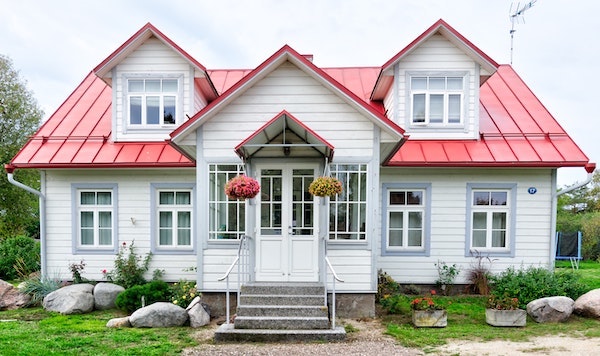Written on: June 10, 2020

(Photo/Unsplash)
According to the Department of Energy, three-quarters of all homes in the United States have an air conditioner. Those who don’t often struggle to find relief during those hot summer months.
In this post, we’ll break down everything you need to know about central air, and how much it can cost to install in your house.
Most simply put, an air conditioning unit removes the heat and moisture from inside your home and replaces it with cooler air.
The AC unit moves the heat inside your home, outside, consists of a:
The pump, also called the compressor, moves the heat transfer fluid (refrigerant) between the evaporator and the condenser.
The refrigerant evaporates in the indoor coil, extracting the heat from inside your home, and cooling it down. The hot refrigerant is then pumped outside via the condenser.
With a central air system, the cooling compressor is located outside your home, and the fan unit is located inside the home. The system utilizes the existing heating and cooling ductwork in your home to distribute the cool (or warm) air evenly.
Many homeowners don’t realize there are two types of air conditioning systems you can install in your home: a packaged unit or a split system.
The packaged unit air conditioner is most commonly connected with a central air system. With this system, the evaporator, condenser, and compressor are placed in one single cabinet. This cabinet is usually located on a concrete slab outside or on the roof. A packaged air conditioner usually includes electric heating coils or a natural gas furnace, which removes the need for an entirely separate furnace.
If you have a furnace but no air conditioner installed, a split-system is for you, as it will likely be the most cost-effective way to install air conditioning in your house.
With a split-system central air conditioning unit, an outdoor cabinet holds the condenser and compressor. An indoor cabinet holds the evaporator, and may also hold the furnace.
It is entirely possible to install central air in an older house; it just may take additional work from the experts.
There are two main things to consider when purchasing and installing an air conditioning unit:
Determining how much cooling your home needs depends on a multitude of factors, including:
Given that older homes have a higher level of air infiltration due to gaps in molding, doorways, loose windows and doors, it will make it harder (but not impossible) to control moisture levels and humidity.
The experts at Old House Journal, an online site that helps owners of older homes to repair, restore, and update their homes, say older homes usually do best with premium air-conditioning systems with a two-stage compressor or dual compressor, and adjustable speed blowers.
Deciding to make that investment depends on the cost to install, and whether you live in a climate where you have a longer cooling season. You should also ask:
Central air conditioning units are typically more efficient than single-room units. In addition to being quiet, convenient, and unobtrusive, they can also save you energy and money in the long run.
Even if you already have a central air conditioning unit, maybe it’s time to think about an upgrade. Newer models use up to 50% less energy to produce the same amount of cool air as the older models. That means, if you installed your cooling system 10 years ago, you could save up to 40% in energy costs by switching it out for a newer model.
If you’ve decided to install central air, it is likely to cost you between $3,779 and $7,429, according to HomeAdvisor.com.
Your final bill will depend on several important factors:
While installation is relatively uncomplicated, it’s important you don’t attempt to install central air on your own. Always work with a licensed air conditioning contractor to ensure your unit is properly installed. Experts with a license are also the only ones who can handle refrigerant chemicals.
A properly installed unit can perform efficiently for years, with annual maintenance. Improperly installed units will perform just as poorly as older, more inefficient models.